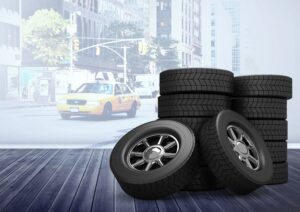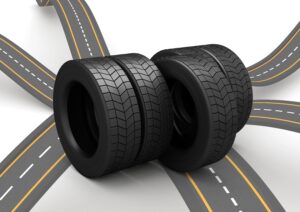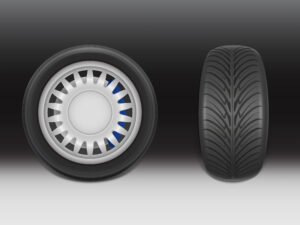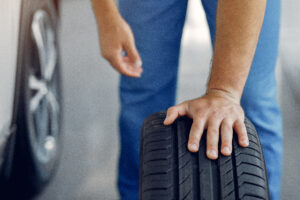Thar Tyre Pressure: The Ultimate Guide for Optimal Performance and Safety
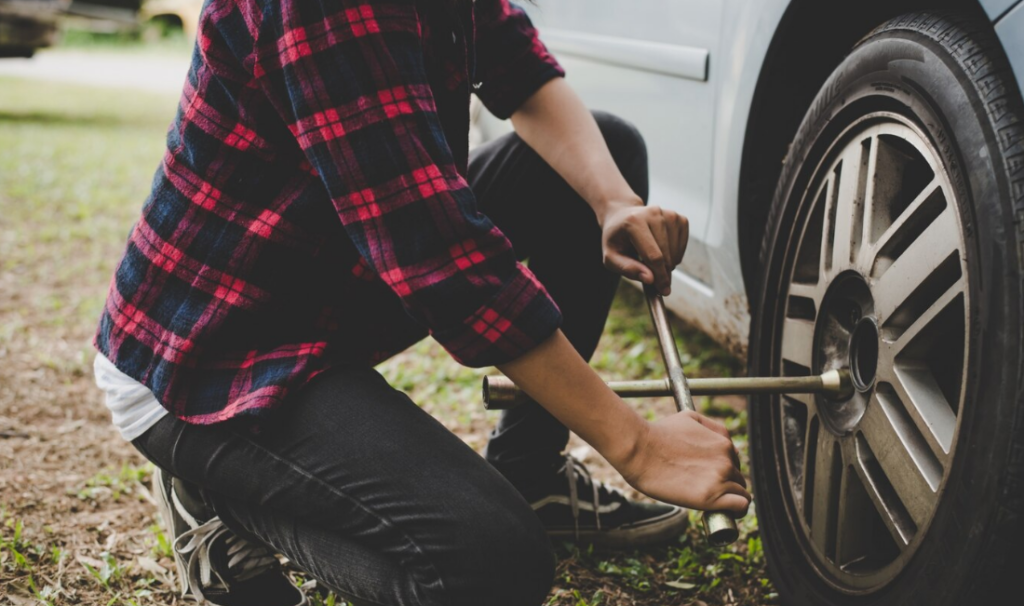
Maintaining the correct Thar tyre pressure is essential for ensuring safety, fuel efficiency, and off-road performance. The recommended tyre pressure for Mahindra Thar generally falls within the range of 30-35 PSI, depending on driving conditions. Keeping the tyres properly inflated improves grip, handling, tyre lifespan, and fuel consumption, making it a crucial aspect of vehicle maintenance.
The Mahindra Thar is built for both city roads and extreme off-road conditions, but improper tyre pressure can lead to unstable handling, increased tyre wear, and poor mileage. Whether you are using your Thar for daily commuting, long highway drives, or off-road adventures, adjusting your Thar tyre pressure based on the terrain and load is key to enhancing its overall performance.
By the end of this guide, you’ll have a complete understanding of how to optimize your Thar’s tyre pressure for different driving conditions, ensuring the best driving experience and tyre longevity.
Recommended Thar Tyre Pressure for Different Conditions
One of the most important things every Thar owner must know is the correct tyre pressure for their vehicle in different driving conditions. Maintaining optimal Thar tyre pressure improves fuel economy, stability, and tyre life, while improper tyre pressure can lead to serious issues such as uneven tyre wear, poor traction, and even blowouts.
Mahindra Thar Recommended Tyre Pressure
- For City and Highway Driving: Keeping the Thar tyre pressure at 32 PSI (front and rear) is recommended for normal driving conditions. This ensures a comfortable ride, good fuel economy, and even tyre wear.
- For Heavy Load or Full Passenger Capacity: If the vehicle is carrying heavy loads or is at full seating capacity, increasing the tyre pressure slightly to 34-35 PSI helps maintain proper handling and prevents excessive sidewall flexing.
- For Off-Road Driving on Sand and Mud: When driving in soft terrains like sand or mud, lowering the tyre pressure to 25-28 PSI allows the tyres to spread out more, improving traction and preventing the vehicle from sinking.
- For Rocky or Uneven Terrain: On rocky or uneven surfaces, keeping the Thar tyre pressure between 28-30 PSI provides a good balance between grip and shock absorption, protecting the tyres from sharp objects and harsh impacts.
Driving with incorrect Thar tyre pressure can lead to severe issues:
- Underinflated Tyres (Below 30 PSI) Cause:
- Increased rolling resistance, reducing fuel efficiency.
- Uneven and premature tyre wear, particularly on the tyre edges.
- Increased heat buildup, leading to a higher risk of tyre blowouts.
- Poor handling and braking performance.
- Overinflated Tyres (Above 35 PSI) Cause:
- A rough and uncomfortable ride, as the tyres become too stiff.
- Reduced grip on wet or slippery surfaces.
- Increased stress on suspension components.
- Higher chances of tyre damage when hitting potholes or rough patches.
Maintaining the correct Thar tyre pressure is one of the simplest yet most effective ways to enhance your vehicle’s overall performance.
Choosing the Best Thar Tyres for Different Terrains
Selecting the right tyres for your Mahindra Thar is just as important as maintaining proper tyre pressure. The right tyres ensure better grip, handling, stability, and durability, which are all essential for both on-road and off-road driving.
Types of Tyres for Mahindra Thar
- Highway-Terrain (H/T) Tyres:
- Designed for city and highway driving.
- Provide a smoother and quieter ride.
- Offer better fuel efficiency due to lower rolling resistance.
- Less suitable for off-road use as they have limited traction on rough surfaces.
- All-Terrain (A/T) Tyres:
- Ideal for drivers who switch between city roads and off-road adventures.
- Have a balanced tread pattern that provides good grip on both highways and rough terrains.
- Offer better durability and resistance to punctures.
- Slightly noisier and less fuel-efficient compared to H/T tyres.
- Mud-Terrain (M/T) Tyres:
- Best suited for extreme off-road conditions such as muddy, rocky, and sandy terrain.
- Feature aggressive tread patterns that provide maximum traction.
- Have reinforced sidewalls for extra durability.
- Not recommended for daily city driving due to their noisy ride and lower fuel efficiency.
Best Thar Tyres for Different Driving Needs
- For City Driving & Highway Use:
- For Off-Road Adventures:
- For Mud and Rocky Terrain:
Choosing the right off-road tyres for Thar significantly enhances the vehicle’s ability to navigate challenging terrains while keeping the ride smooth and stable.
Adjusting Thar Tyre Pressure for Off-Road Driving
Driving off-road requires special attention to Thar tyre pressure, as different terrains demand different levels of traction, grip, and flexibility. Lowering tyre pressure can make a significant difference in how the vehicle handles obstacles.
Recommended Off-Road Tyre Pressure
- Sand and Mud Driving: Lowering the Thar tyre pressure to 25-28 PSI increases the tyre’s surface area, improving flotation and reducing the chances of getting stuck.
- Rocky and Uneven Terrain: Keeping the pressure at 28-30 PSI provides better traction while allowing the tyres to absorb shocks from rocks and uneven surfaces.
- Snow or Slippery Surfaces: Maintaining a tyre pressure of 30-32 PSI helps the tyres grip the road better while reducing the risk of skidding.
How to Adjust and Maintain Thar Tyre Pressure
- Use the Thar’s Tyre Pressure Monitoring System (TPMS) to keep track of tyre pressure in real-time.
- Carry a manual or digital pressure gauge for accurate readings and adjustments.
- Use a portable air compressor to inflate or deflate tyres as needed when switching between on-road and off-road driving.
- After off-road trips, reinflate tyres to the recommended pressure before driving on highways to avoid excessive wear.
By adjusting your Thar tyre pressure according to terrain conditions, you can improve your vehicle’s performance, enhance safety, and prevent unnecessary tyre damage.
Tyre Maintenance Tips for Better Performance and Longevity
Maintaining the right Thar tyre pressure is only one part of proper tyre care. Regular maintenance helps prolong tyre life and ensures consistent performance.
- Check tyre pressure every two weeks and before long trips.
- Rotate tyres every 5,000-8,000 km to prevent uneven wear.
- Inspect tread depth and sidewalls for cracks, cuts, or punctures.
- Ensure proper wheel alignment and balancing every 10,000 km.
- Keep a spare tyre and emergency repair kit in your Thar at all times.
By following these tyre maintenance tips, you can improve tyre lifespan, reduce fuel consumption, and enhance driving safety.
Conclusion
Maintaining the correct Thar tyre pressure is crucial for safety, fuel efficiency, and tyre longevity. Whether driving on city roads, highways, or extreme off-road terrains, adjusting your Mahindra Thar recommended tyre pressure ensures optimal grip, stability, and performance. Choosing the best Thar tyres based on your driving needs further enhances your vehicle’s capabilities. Regular tyre maintenance, including pressure checks and tread inspections, prevents premature wear and improves driving comfort.
Get Expert Tyre Services at KwikFix Auto
For professional tyre maintenance, repair, and replacement, visit KwikFix Auto. Our experts ensure your Thar’s tyres are in top condition for every journey. Book your service today!
Frequently Asked Questions
Q1. What is the ideal tyre pressure for Mahindra Thar?
A1. The recommended Thar tyre pressure is 32 PSI for city and highway driving. For off-road driving, it can be reduced to 25-30 PSI depending on terrain.
Q2. What are the best tyres for Thar?
A2. For city driving, Bridgestone Dueler H/T and Michelin LTX Force are great options. For off-road adventures, BF Goodrich All-Terrain KO2 and Apollo Apterra AT are highly recommended.
Q3. Can I use the same tyre pressure for city and off-road driving?
A3. No, for city driving, keep the pressure around 32-35 PSI. For off-road conditions, lower it to 25-30 PSI for better traction.
Q4. How often should I check my Thar’s tyre pressure?
A4. You should check your Thar tyre pressure every two weeks or before long trips to ensure optimal performance.
Q5. What happens if I drive with underinflated tyres?
A5. Underinflated tyres cause poor fuel efficiency, higher rolling resistance, excessive tyre wear, and increased risk of blowouts.
Q6. Can I install bigger tyres on my Mahindra Thar?
A6. Yes, but make sure the new tyre size is compatible with your vehicle to avoid issues with handling, braking, and fuel economy.
Q7. Why does tyre pressure drop in cold weather?
A7. Tyre pressure decreases in cold weather due to air contraction. Regularly check and inflate your tyres during winter months.
Q8. Where can I get my Thar’s tyres checked and replaced?
A8. For expert tyre maintenance, repair, and replacement, visit KwikFix Auto for professional service.

